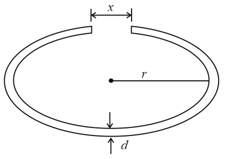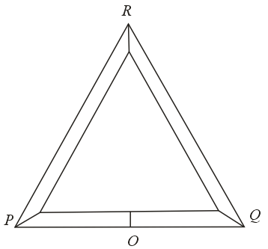B M Sharma Solutions for Chapter: Thermometry, Thermal Expansion and Calorimetry, Exercise 3: Exercises
B M Sharma Physics Solutions for Exercise - B M Sharma Solutions for Chapter: Thermometry, Thermal Expansion and Calorimetry, Exercise 3: Exercises
Attempt the practice questions on Chapter 1: Thermometry, Thermal Expansion and Calorimetry, Exercise 3: Exercises with hints and solutions to strengthen your understanding. PHYSICS FOR JOINT ENTRANCE EXAMINATION WAVES AND THERMODYNAMICS solutions are prepared by Experienced Embibe Experts.
Questions from B M Sharma Solutions for Chapter: Thermometry, Thermal Expansion and Calorimetry, Exercise 3: Exercises with Hints & Solutions
A cylindrical metal rod of length is shaped into a ring with a small gap as shown. On heating the system

If a graph is plotted taking the temperature in Fahrenheit along the Y-axis, and the corresponding temperature in Celsius along the X-axis, then the graph will be a straight line,
The temperature of an isotropic cubical solid of length , density and coefficient of linear expansion is increased by . Then at higher temperature, to a good approximation:-
of ice at is mixed with of water at in an insulating container. If the specific heat capacities of ice and water are and , find the amount of water present in the container? (in nearest integer)
A clock with a metallic pendulum at runs faster by each day and at , runs slow by . Find the coefficient of linear expansion of the metal. (nearly in )
Two vessels connected at the bottom by a thin pipe with a sliding plug contain liquid at and respectively. The coefficient of cubic expansion of liquid is . The ratio of heights of liquid columns in the vessel is nearest to which integer?
Three rods of equal length are joined to form an equilateral triangle . is the mid point of . Distance remains the same for small change in temperature. Coefficient of linear expansion and is the same, i.e., but that for is . Then find the ratio .

A block of ice of mass slides on a horizontal surface. It starts with a speed of and finally stops after moving a distance of . What is the mass of ice (in grams) that has melted due to friction between the block and the surface? Latent heat of fusion of ice is
